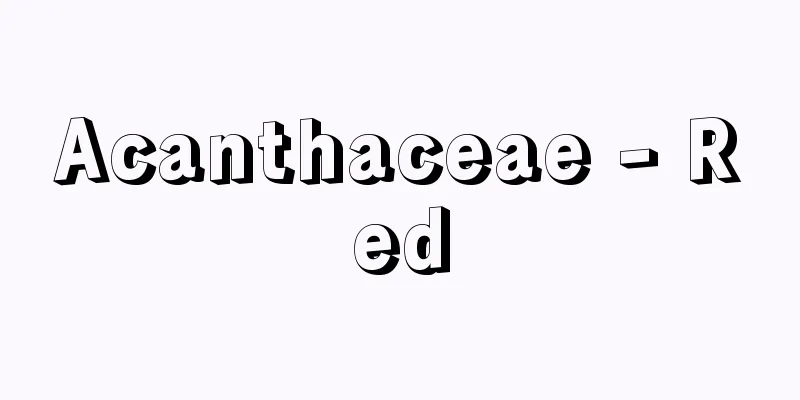Keyhole-shaped tumulus - Zenpoukoenfun

|
A form of tomb unique to Japan. It was built throughout the Kofun period. It has a shape that resembles a combination of a circular and a square mound, and this name was first used in Gamo Kimpei's Sanryōshi. Currently, the circular part is called the circular rear part, the square part the front part, and the part where they meet is called the constricted part. There are various changes in shape depending on the era and region, but generally, older tombs have a lower front part than the height of the circular rear part, and are narrow and elongated. As the era progresses, the width of the front part becomes wider and the height increases. Some have a protruding part built into the constricted part. In the final period, the width of the front part becomes much larger than the diameter of the circular rear part, and it is also taller. The overall size does not necessarily increase, but rather becomes smaller. There are various theories about why such a unique shape was created, including that it began as a cut-off shape from a natural hill, and that the front part was a deformation of an altar attached to a circular kofun. The construction of this type of kofun required the mobilization of a large number of people and civil engineering techniques. Surveys of existing kofun indicate that in particular civil engineering techniques were used to create beautiful shapes, with various rules being considered in the design. Furthermore, because of the relationship with political and economic power seen in the mobilization of personnel, it is indispensable for research into the period of the formation of the Japanese nation. Representative keyhole-shaped kofun include the tomb of Emperor Nintoku (Daisen Kofun), the largest in Japan, as well as the tomb of Emperor Ojin and Zozan Kofun (see Soja Kofun Group). In recent years, tombs of this type have also been confirmed in the southern part of the Korean Peninsula. Source: Encyclopaedia Britannica Concise Encyclopedia About Encyclopaedia Britannica Concise Encyclopedia Information |
|
日本に特有な墳墓形式。古墳時代を通じて造られている。円形の墳丘と,方形の墳丘が結びつけられたような形をしており,この名称は蒲生君平の『山陵志』において初めて用いられた。現在は円形の部分を後円部,方形の部分を前方部と呼び,接際部をくびれ部と呼んでいる。年代や地域によって,形のうえにさまざまな変化がみられるが,一般に,年代的に古いものは,後円部の高さに比べて前方部が低く,幅も狭く細長いものが多い。年代が新しくなるに従って,前方部の幅が広くなり,高さも高くなる。くびれ部に造り出し部が造られるものもある。終末期になると前方部の幅は後円部の径よりずっと大きくなり,高さも高くなっている。全体の規模は必ずしも大きくはならず,かえって小さくなっている。このような特異な形がどうしてつくられたかについては諸説があり,自然の丘陵を切断した形がその始まりだとか,前方部は円形の古墳につけた祭壇が変形していったものであるとかいわれる。この形の古墳の築造には大規模な人員の動員と土木技術が要求された。特に土木技術については,設計のために,さまざまの法則を考えて,美しい形をつくろうと努力した様子が,現存する古墳の測量からうかがうことができる。また人員動員などにみられる政治・経済力との関係から日本国家形成期の研究には欠かすことができない。代表的な前方後円墳としては,国内最大の仁徳天皇陵 (大仙古墳) のほか応神天皇陵,造山古墳 (→総社古墳群 ) などがある。近年,朝鮮半島南部にも,この形の墳墓が確認されている。
出典 ブリタニカ国際大百科事典 小項目事典ブリタニカ国際大百科事典 小項目事典について 情報 |
<<: Keyhole-shaped tomb - Zenpoukouhofun
>>: Periscope - senboukyou (English spelling)
Recommend
Kiso eleven post towns
...The Kiso post towns were characterized by the ...
Dermatomyositis - Hifukinen (English spelling) Dermatomyositis
What is the disease? The main sites of lesions ar...
Nakanoguchi [Village] - Nakanoguchi
A village in Nishikanbara County, central Niigata ...
Pēneios (English spelling)
…Her name means “laurel tree.” She was the daught...
Empress Kōken
Year of death: Hōki 1.8.4 (770.8.28) Year of birth...
Structuralism
Generally speaking, it refers to an ideological st...
Brain bank
...An organization that conducts research aimed a...
Etching (IC)
… [The emergence of bipolar planar ICs] The bigge...
Eating a meal - Kasshiki
〘Noun〙① ("Katsu" means to chant) In Zen ...
Magistratus
...It is not clear when and how the distinction b...
Polystyrene
...A typical general-purpose thermoplastic resin ...
Carbide Industry - Carbide Industry
An industry that manufactures carbide (calcium car...
protoculture
… [Takada Akihiko] [Subcultures in Animals] This ...
Kinno - Shimeno
In ancient times, wilderness areas were prohibite...
Tsukiyotake (Lampteromyces japonicus)
Basidiomycetes, order Acarinales, family Tricholom...
![Hokuryu [town] - Hokuryu](/upload/images/67ccd73ca9107.webp)








![PepsiCo [company] - PepsiCo](/upload/images/67cccaa739b49.webp)